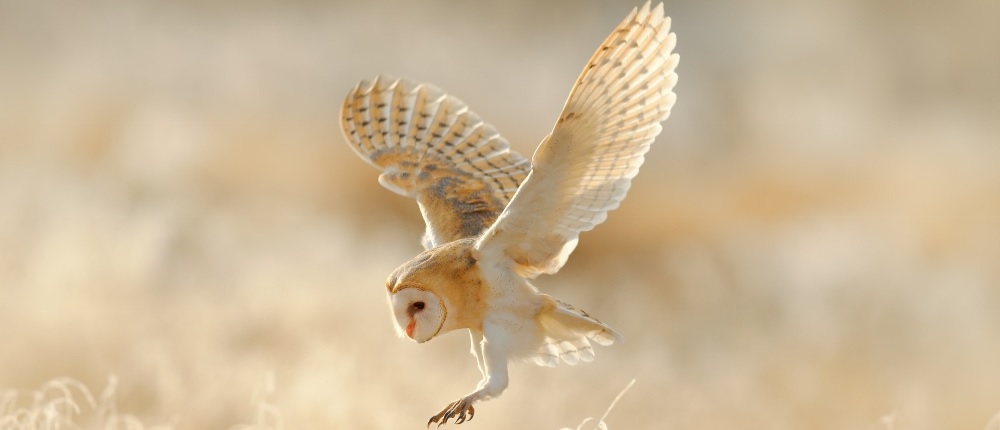Our Beautiful Birds
When we lived in suburbia, we often wondered where all the birds had gone. Few birds visited our small garden and there was certainly no dawn chorus. The decline in avian populations was all too obvious. Things are very different here! There are always birds in the garden or by the river and the dawn chorus can be spectacular. Many different species visit us and the hedgerows in the surrounding lanes are home to yet more of our feathered friends.
Our favourite visitor is an amazing heron who can often be seen on the river bank. But he or she sometimes sits in the garden looking rather majestic. Unfortunately this bird never has the decency to land around the property when I have a camera in my hand. I should also mention the great tit who likes to flutter around the office window and the exceedingly bold starling who hangs out in the garden while we are digging and planting.
We often see birds of prey hovering over the adjacent field but have never been close enough to identify what they are. I was walking the dogs in the lanes one day when something large and brown flew across the road right in front of me and dived into the field. Whatever it was, probably a buzzard, this bird nearly took my head off and gave me quite a fright!
You can be pretty sure that you will see and hear many birds around the Woollen Mill. They are always a wonderful sight and our only regret is that we have so little time to watch them. I am convinced that if we could spend more days in the garden, we would discover that we are visited by many more species than we have seen so far.
If you enjoy bird watching, there are numerous sites along the coast where you will see a variety of seabirds. You should also visit the two RSPB reserves on Angelsey – Cars Ddyga and Valley Wetlands. Below are some of the birds that you will almost certainly see at the Woollen Mill. We hope you will visit us soon and, in the meantime, we will try our very best to take a decent picture of that elusive heron!
BIRDS ARE BOUNTIFUL AROUND THE WOOLLEN MILL
HERE’S WHAT YOU CAN EXPECT TO SEE!
Heron
We are always delighted to see the heron which visits the river behind the mill. But never when we have a camera handy, of course! We feel quite attached to this bird which sometimes perches on the garden wall. It is certainly a dramatic sight when he or she takes flight and swoops over the water. There might be several herons in the area as we wouldn’t be able to identify a particular individual. However, we like to think that it is the same chap every time we see that familiar flash of grey. The grey heron suffered a sharp decline around 2010 following two consecutive harsh winters. These birds are now comparatively rare.
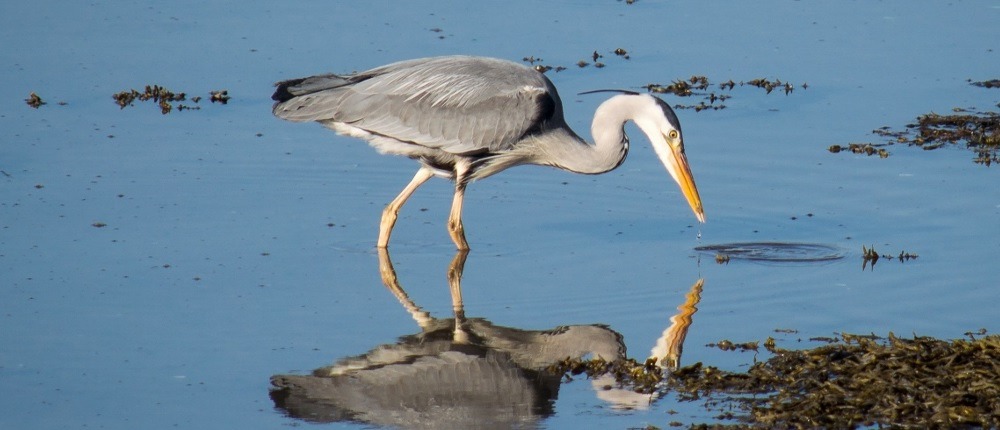
Great Tit
I lived in Berkshire for 20 years and I never saw a great tit in the garden but things are very different here. In the summer months, great tits are everywhere and there is one little fellow who likes to flutter about in front of the office window. Unlike many gardens birds in the UK, Great Tits are not in decline. They might have been were it not for the feeders and nesting boxes which many people now provide. Happily, around here, nesting boxes are not required as natural nesting sites abound including holes in trees and gaps in stone walls. Great tits like to line their nests with soft material and so the profusion of sheep in North Wales also helps.
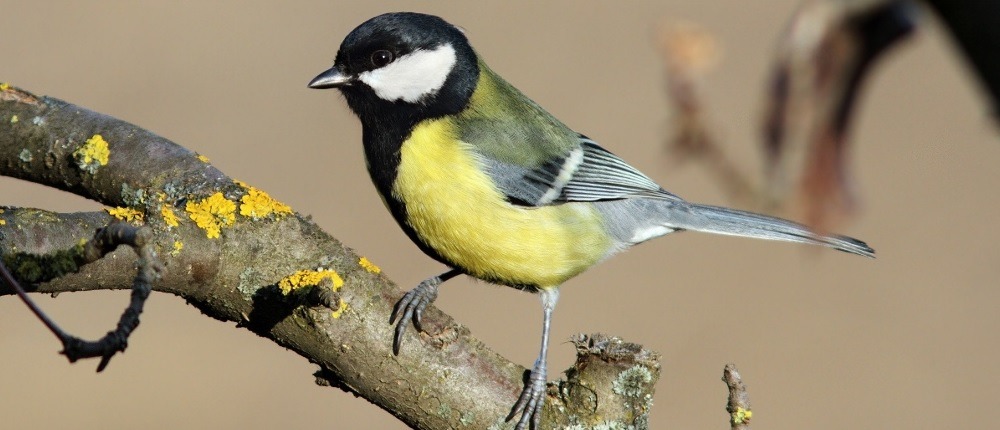
Swallow
Swallows favour open areas such as fields and meadows so it come as no surprise that there is a healthy population around The Woollen Mill. The adjacent farmland and barn are swallow magnets! At dusk in the summer months, it has been great fun trying to decide if we are being surrounded by swallows, swifts or bats as they all move so quickly. We glimpse brief silhouettes against the darkening sky as the birds and bats compete for air space. They say that one swallow doesn’t make a summer but the large numbers we have seen hereabouts probably do!
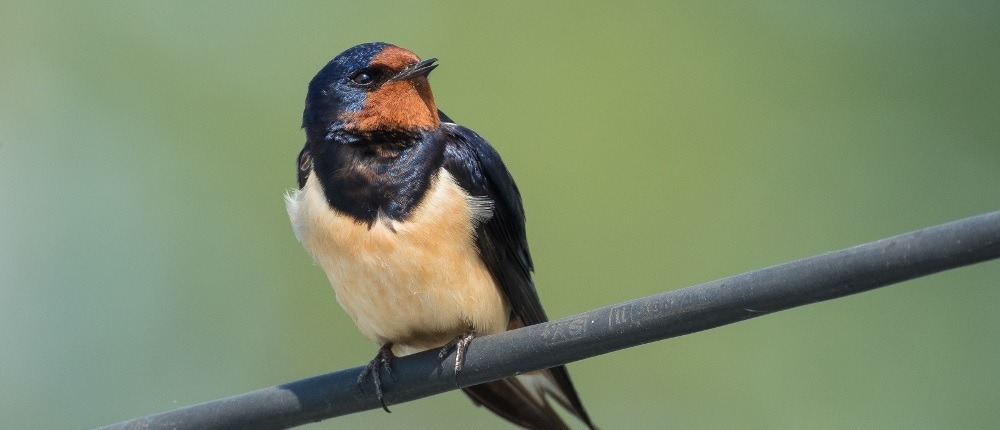
Pied Wagtail
Pied wagtails tend to gather near water so we regularly see these lovely little birds around the mill as we are next to the river. They like to perch on the walls, furiously wagging their tails. There’s something incredibly cheerful about wagtails and we were especially pleased to find a pair nesting in the tree above the Tryfan apartment this year. These birds are insect eaters and so enjoy a veritable smorgasbord of delights around the Llyfni! In the winter months, when insects are scarce, they will take seeds from feeders or any treats they can get their beaks on!
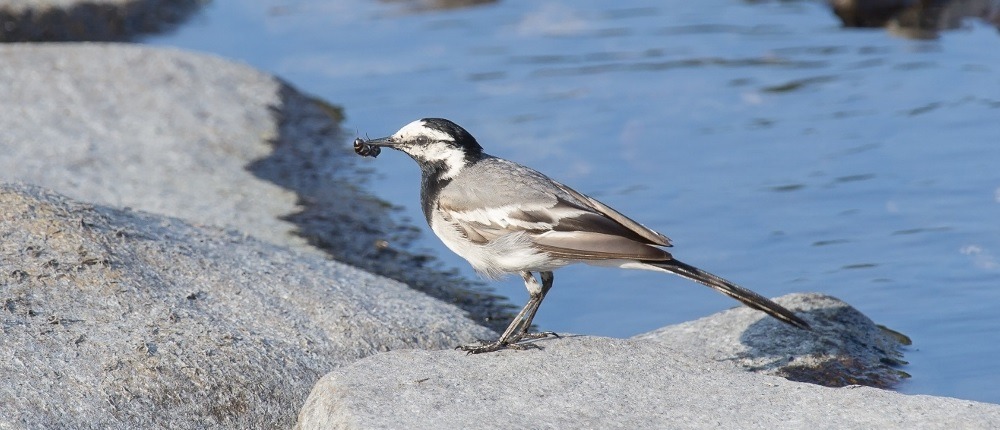
Robin
They are neither endangered nor rare, but robins are special aren’t they? There is no more endearing sight that these gorgeous birds and I love it when I look out of the window and one of those familiar red breasts appears. Robins famously nest in the most unlikely places, including sheds, boots and hanging baskets. I haven’t spotted any weird and wonderful nesting sites around here yet but I think it can only be a matter of time. There are so many nooks and crannies around the mill for the birds to take advantage of. Perhaps they have found them and I just haven’t noticed yet!
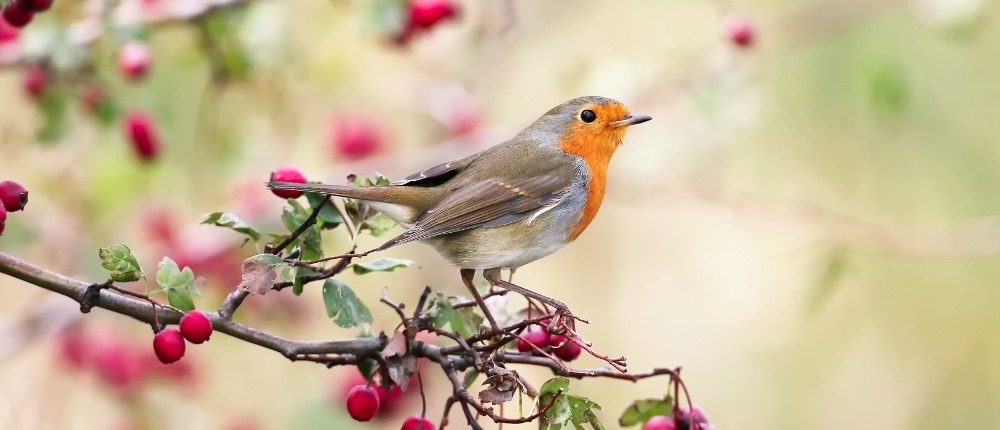
Buzzard
The UK’s most widespread bird of prey, the buzzard is a majestic sight and can frequently be seen circling above the fields around the woollen mill. As you walk along the lanes, it isn’t unusual to see a buzzard swooping down and across the road in front of you, an event which is guaranteed to make you jump! These birds are quite large and vary in colour from dark brown to much lighter shades. Their call is unmistakable and sounds like a cat! Buzzards are not endangered but that does not diminish the wonder of seeing them flying high above the Welsh countryside
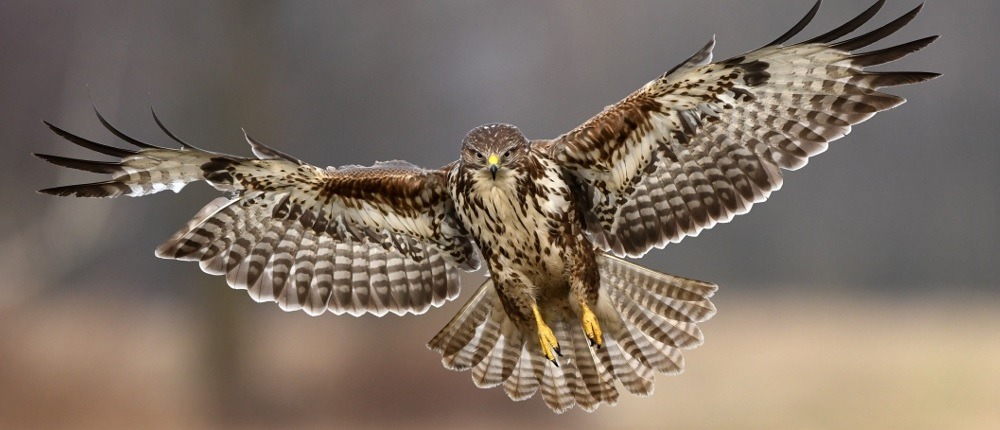
Starling
Still a relatively common site in the UK, the starling has declined rapidly elsewhere and so is a red-listed species. These gregarious birds feed in small groups but flock together at their roosting sites in the evenings. You will see huge clouds of starlings swooping over the fields creating amazing formations. If you walk along the lanes in the autumn months, you will often find that there are large numbers of starlings circling above or landing in the meadows to feed. The larger flocks are genuine showstoppers, especially at sunset. I hadn’t given these birds much thought until moving to Wakes but I now find them fascinating.
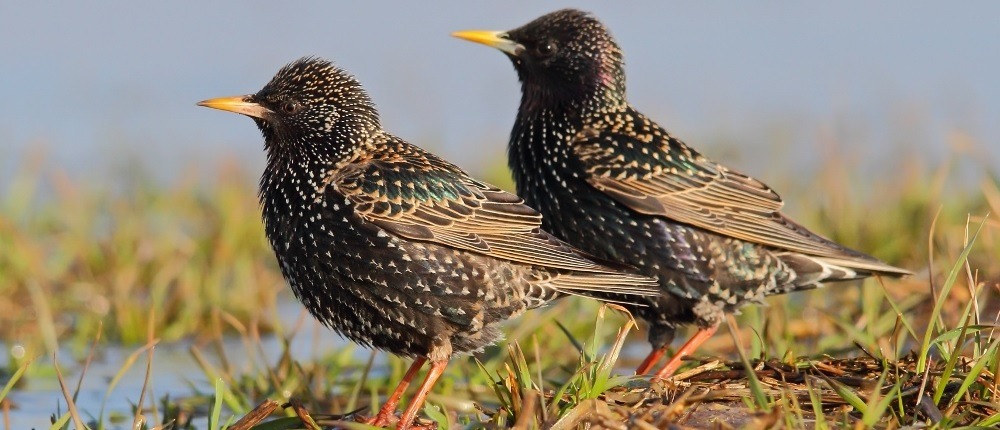
Goldfinch
Surely one of this county’s prettiest birds, the goldfinch favours gardens, parks, woodland, heathland and farmland. It feeds principally on seeds, especially from ragwort, dandelions and teasels but will also eat invertebrates. During the winter months, goldfinches move about in flocks of up to 100 birds, searching for food and some will migrate as far south as Spain to escape harsh weather. These gorgeous birds can be seen in the hedgerows around the mill and occasionally in the garden. The collective noun for a group of goldfinches is a charm. How wonderfully appropriate!
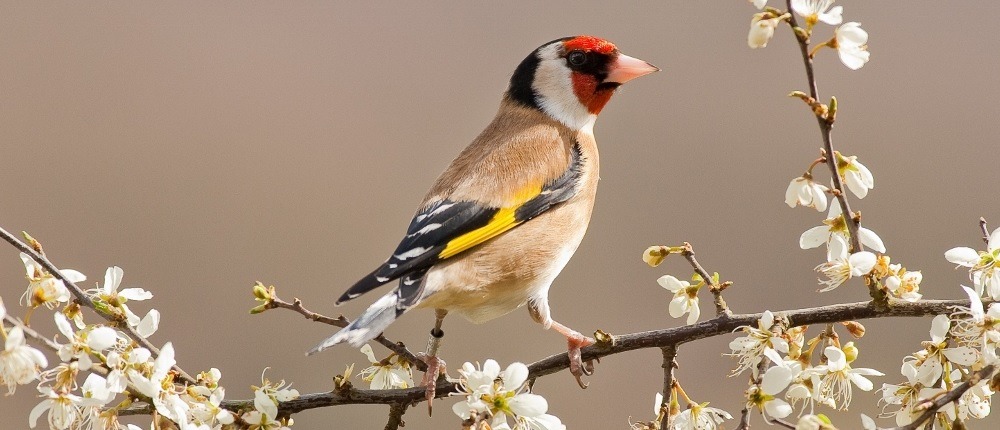
Jay
As jays (Garrulus glandarius) rarely venture far from cover, they can be difficult to see and so we were surprised to find several of these birds perching on the handrail of the footbridge one afternoon. These woodland dwellers are notable for their screaming calls and their love of acorns. Each bird can spread up to 1000 acorns in a year. Their forgotten snacks are thought to have caused the rapid spread of oaks after the last ice age. Jays are not endangered but there are as few as 170,000 breeding pairs in the UK. At least a dozen of these are to be found in the woods opposite the mill.
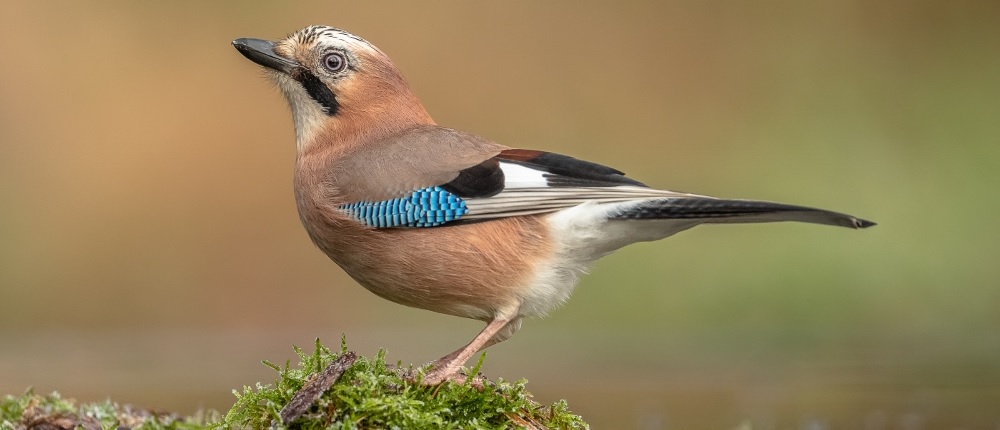
Coal Tit
There are thought to be around 680,000 breeding pairs of coal tits in the UK. The coal tit (Periparus ater) favours woodland habitats, particularly conifer woodland, and is a year-round resident throughout its range. It hunts for insects and spiders among the smaller branches and leaves of trees in woodlands. But will also visit feeders in gardens. The coal tits around the mill don’t seem greatly interested in our feeders and their preferred perches are the branches of the Monkey puzzle tree. They can be very hard to spot and we rarely see them in the open but occasionally we catch sight of them through the kitchen window.
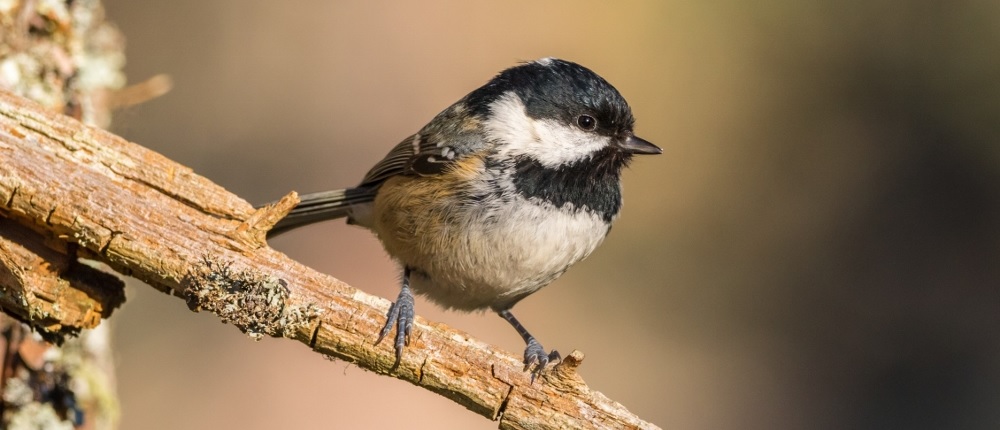
Great Spotted Woodpecker
I was stunned when I found one of these stunning birds feeding on peanuts in the front garden. I thought I was seeing things until I saw another on a feeder outside the Tryfan apartment. The great spotted woodpecker (Dendrocopos major) is quite a sight and apparently loves peanuts. There are roughly 140,000 breeding pairs in the UK and we are lucky that some of these are clearly living in the woodland opposite the mill. The male has a distinctive red patch on the back of the head and young birds have a red crown. We hope they become frequent visitors to our feeders.
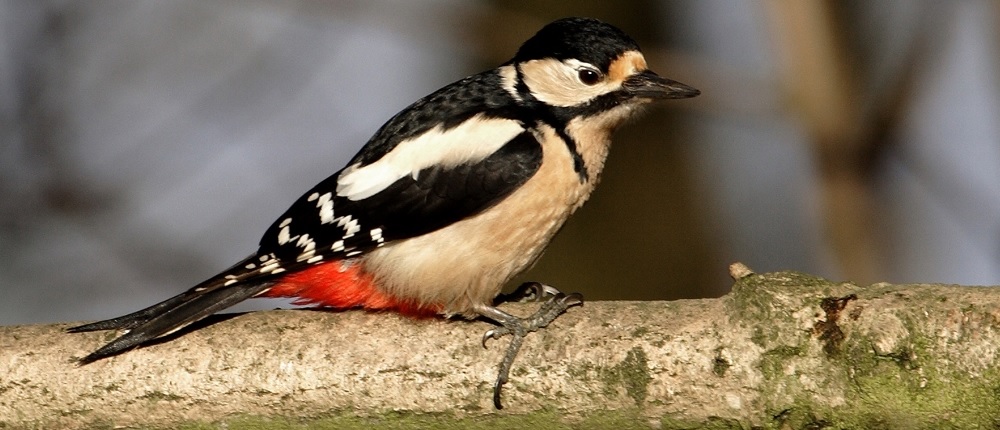
Chaffinch
An abundant species in the UK, the chaffinch (Fringilla coelebs) is a very common sight in our gardens. Chaffinches boast pretty plumage that provides camouflage when they are feeding on the ground. Indeed, these birds are said not to visit feeders but to hop around under feeders instead, taking what has fallen. However, at The Woollen Mill, you will see chaffinches both on the ground and on our feeders. There are over 5 million chaffinches in the UK and we seem to have a large portion of that population living around the mill!
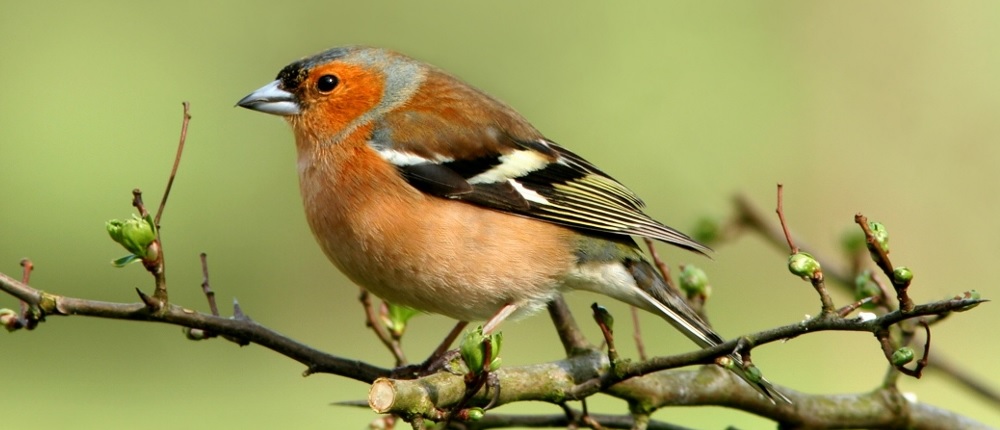
Blackbird
Once in serious decline, the blackbird has thrived in recent years and has been removed from the amber list of Birds of Conservation Concern. There are now over 5 million breeding pairs in the UK and these birds are frequent visitors to our gardens. The males are black while the females are brown. You won’t see blackbirds on the feeders as they eat insects, berries and fruit. But you will spot them wandering around the lawn looking for meals or in the apple trees pecking the fruit. Blackbirds are resident all year round and our native birds birds are joined by millions of migrants in the winter months.
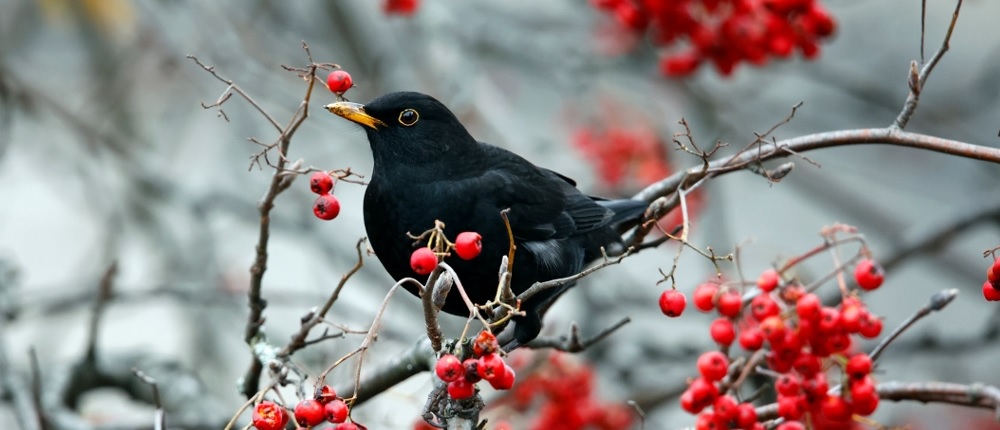
Bullfinch
We don’t see bullfinches very often around The Woollen Mill but occasionally we catch sight of these beautiful birds which are famously shy and secretive. They like to eat fruit and buds which might explain why they never visit our feeders. The bullfinch (Pyrrhula pyrrhula), is resident in Wales throughout the year and favours woodland, orchards and hedgerows. The area around the mill offers the ideal habitat for bullfinches and so their rarity here is worrying. The species is amber listed in the UK which means it is in decline. There are around 265,000 breeding pairs remaining in the UK and we wish more of them would nest here!
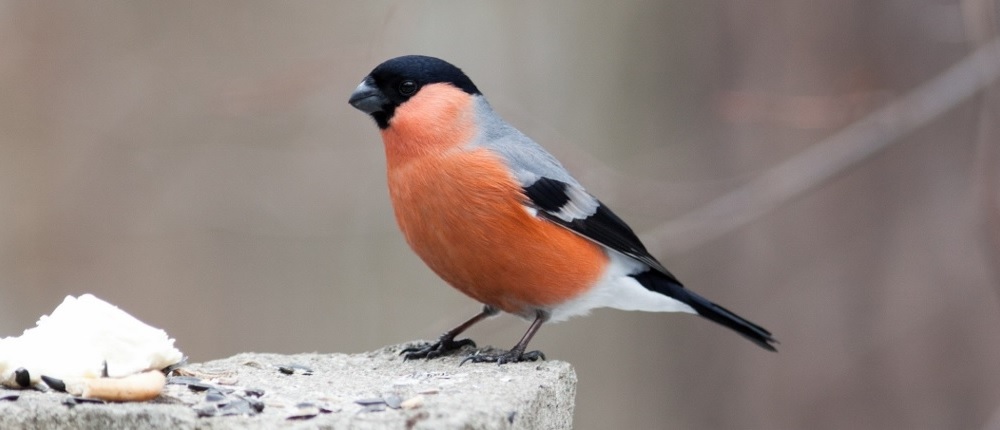
Grey Wagtail
Grey wagtails (Motacilla cinerea) are comparatively rare in the UK as there are only 37,000 breeding pairs. But they are common sights around The Woollen Mill. This isn’t surprising as grey wagtails like fast flowing rivers where they can swoop down to grab the insects that fly above the water. Their super-fast dives are incredibly entertaining and they are very pretty birds. These birds only eat insects and so you won’t see them on our feeders. However, you can’t miss them around the river and they will occasionally hop about in the garden. This species is amber listed and so is a bird that is of conservation concern.
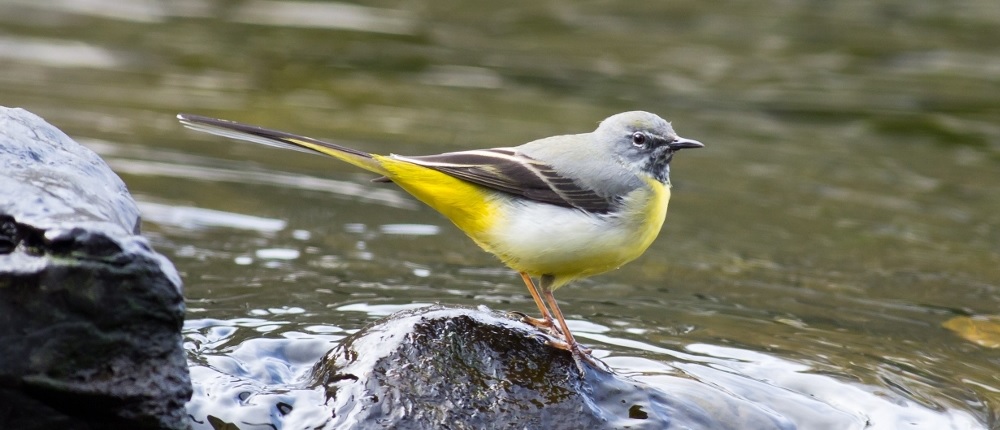
Barn Owl
Barn owls are rare sights as they are nocturnal birds and there are only 4,000 – 14,000 breeding pairs in the UK. We have only benefitted from one sighting of a barn owl (Tyto alba) here but that one magical moment has demonstrated that these birds are living close by. They are principally farmland birds that hunt for small mammals in grassland and field margins. It is thought that the number of barn owls in the UK increased between 1995 and 2008 after a period of decline but nocturnal species are difficult to monitor. For a chance of seeing an owl, walk around the lanes after dark.
